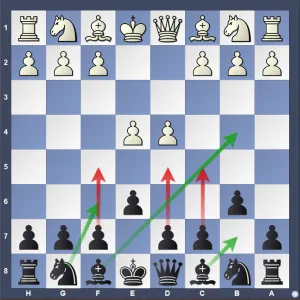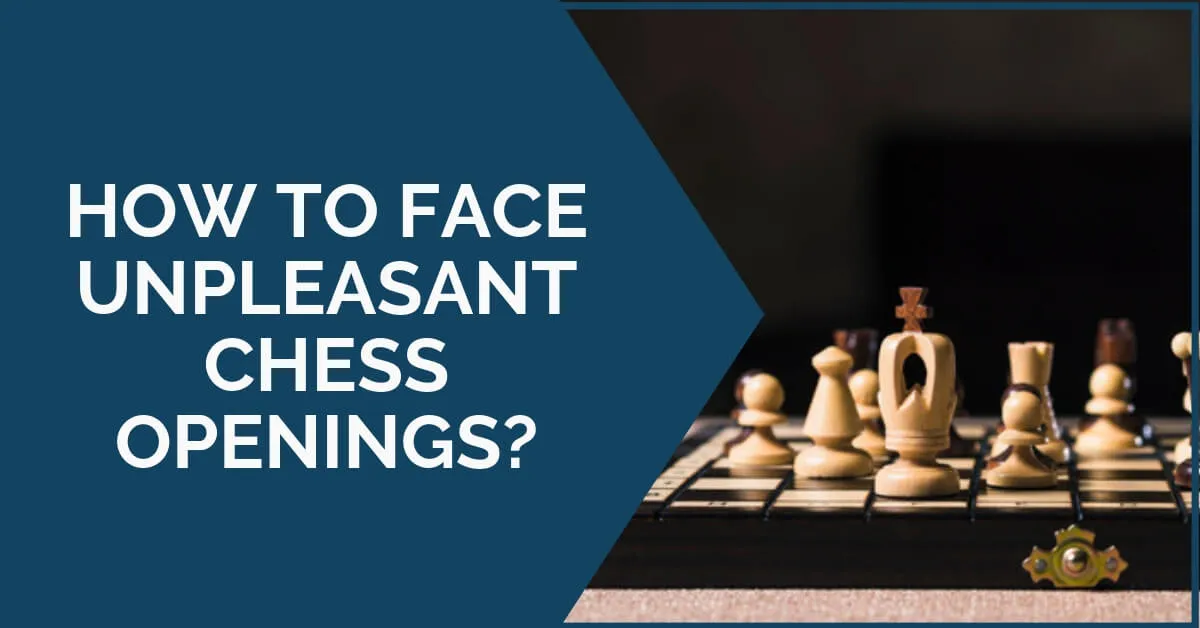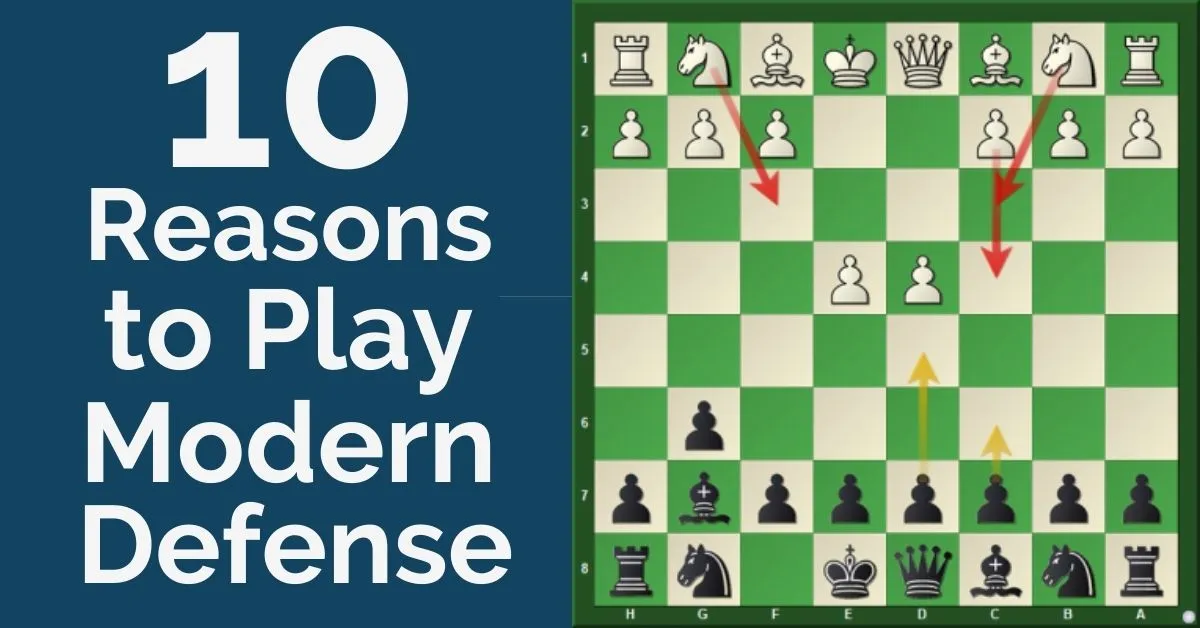Owen’s Defense: 10 Reasons to Play It
Owen’s Defense starts with the moves 1.e4 b6 or 1.e4 e6 2.d4 b6 when Black is going to fianchetto the light-squared bishop. This is a bit slow and allows White to occupy the center but Black is hoping to attack it later with pieces and pawns. This system is not going to equalize any quickly, but people usually don’t play it to make a draw. This is the way to unbalance the game and outplay the opponent in the less-known positions.
The same setup can be played against the other White’s first moves as well; in that case, it would be called the English Defense. These openings can transpose one into the other, so in this article, we will call these openings Owen’s Defense to keep it simple.

Keep reading if you are looking for a universal opening: here are 10 reasons why you should play it.
1. Owen’s Defense Allows Playing for a Win
This opening often leads to asymmetrical pawn structures and creates some strategic imbalances that create chances to play for a win.
There are also no simple lines that lead to a perpetual check or allow drying the position out. That makes it a good opening choice in a must-win situation.
2. Surprise weapon
It is not a very common opening so most likely your opponents will not be ready to meet it. This will take them out of their comfort zone and increase their chances to go wrong. It should work especially well against those players who just memorized main openings but haven’t got positional or strategic understanding.
3. Owen’s Defense is Memory Friendly
It is not an opening where you have to learn everything by heart. Here understanding and experience will play a more important role. Learn typical plans and ideas and use them to outplay your opponents.
4. Play the Same Setup against Everything with Owen’s Defense
You can play 1…b6 basically against everything. Only 1.g3 looks preventing it but it is rare and doesn’t cause much trouble anyways.
Against closed openings, this defense works even better than against 1.e4, although it is mostly a matter of taste.
5. Owen’s Defense Allows Active Piece Play
In this opening, Black fights for the control of the key e4-square as hard as possible.
They put pressure on White’s center by the bishop from b7, the knight from f6; sometimes the dark-squared bishop pins the c3-knight from b4. Such an active piece play often creates tactical possibilities.
6. A lot of pawn breaks
Black can also break White’s center with pawns: …c7-c5, …d7-d5, or even …f7-f5 pushes are at Black’s disposal. This is a great feature because it means that you will always be able to find what to do in this opening.
7. Owen’s Defense Allows Seizing the initiative if White Overextends
This is a common scenario in chess when one side allows taking the center and the second side decides to occupy it with all the central pawns.
If White puts more than two pawns in the center against our opening (which is tempting!), we get a lot of ideas on how to punish them quickly.
8. Owen’s Defense is Similar to Other Openings
The experience and knowledge of Owen’s Defense will help you in a lot of openings.
The Queen’s Indian Defense, the English Opening, the French Defense, the Larsen’s Opening are only some of them.
9. Owen’s Defense Played by Many Grandmasters
Usually, grandmasters play more mainstream openings but they use the Owen’s Defense from time to time.
The most notable recent example is when Magnus Carlsen employed it to defeat another top grandmaster Pavel Eljanov. It was also many times played by Hikaru Nakamura, Dmitry Andreikin, Christian Bauer, and others.
10. In Owen’s Defense there is Room for Creativity
With 1…b6 you leave the trodden paths quite early. There are many advantages of this: lots of fresh ideas yet to be found, no fear of losing to your opponent’s good memory, and just a joy of playing pure human chess!
Ready to include 1…b6 into your repertoire?
IM Bryan Solano Cuya is here to give away his brand-new Play 1…b6! — a 4.5+ hour video-based training where the first segment focuses on the analyses of different lines in this opening and the second segment covers real-life games in 10 modules.
https://thechessworld.com/store/product/play-1-b6-with-im-bryan-solano-cuya/










Comments: